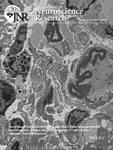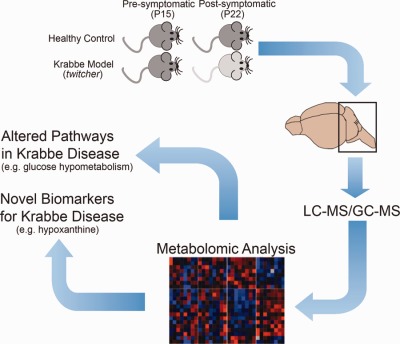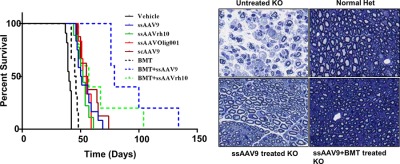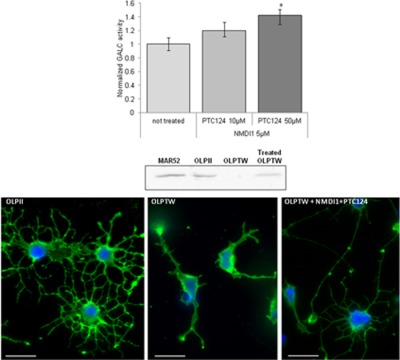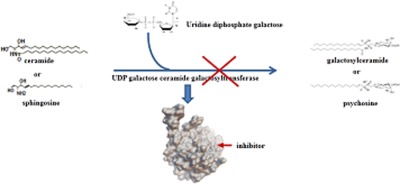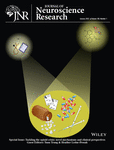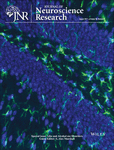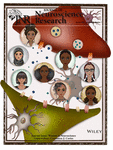Journal list menu
Export Citations
Download PDFs
Cover Image
Cover Images
- Page: Spc1
- First Published: 17 September 2016
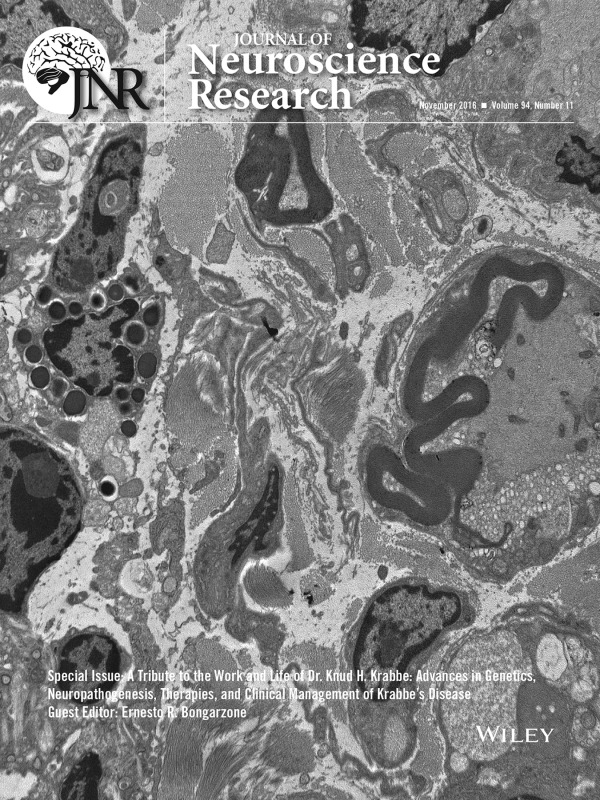
Demyelination, axonal pathology, edema, and monocytic infiltrates, pathological hallmarks of Krabbe's disease, are readily observed by electron microscopy of a peripheral nerve preparation from an affected twitcher mouse. Image prepared by Dr. Ernesto R. Bongarzone (University of Illinois, Chicago).
Issue Information – Table of Contents
Issue Information – Table of Contents
- Pages: 957-961
- First Published: 17 September 2016
Preface
A tribute to the work and life of Dr. Knud H. Krabbe: Advances in genetics, neuropathogenesis, therapies, and clinical management of Krabbe's disease
- Pages: 963-964
- First Published: 17 September 2016
Commentary
My encounters with Krabbe disease: A personal recollection of a 40-Year journey with young colleagues
- Pages: 965-972
- First Published: 17 September 2016
Genetics, Biochemistry, and Animal Models
Reviews
Lysosphingolipids and sphingolipidoses: Psychosine in Krabbe's disease
- Pages: 974-981
- First Published: 17 September 2016
Krabbe disease: One Hundred years from the bedside to the bench to the bedside
- Pages: 982-989
- First Published: 17 September 2016
Biochemical, cell biological, pathological, and therapeutic aspects of Krabbe's disease
- Pages: 990-1006
- First Published: 17 September 2016
Research Article
Clinical, electrophysiological, and biochemical markers of peripheral and central nervous system disease in canine globoid cell leukodystrophy (Krabbe's disease)
- Pages: 1007-1017
- First Published: 17 September 2016
Neuropathogenesis
Commentary
Fluid levity of the cell: Role of membrane lipid architecture in genetic sphingolipidoses
- Pages: 1019-1024
- First Published: 17 September 2016

Sphingolipidoses are severe and incurable neurological diseases in which sphingolipids (SLs) accumulate to high and toxic levels by unknown mechanisms. SLs, such as psychosine in Krabbe's disease, could insert in membrane, decreasing fluidity and disrupting functional lipid domains, or induce changes in membrane curvature, leading to membrane fragility and cell signaling/function deregulation.
Review
Challenge of phenotype estimation for optimal treatment of Krabbe disease
- Pages: 1025-1030
- First Published: 17 September 2016
Commentary
Synaptic failure: The achilles tendon of sphingolipidoses
- Pages: 1031-1036
- First Published: 17 September 2016
Review
Axonal pathology in Krabbe's disease: The cytoskeleton as an emerging therapeutic target
- Pages: 1037-1041
- First Published: 17 September 2016
Mini-Review
How membrane dysfunction influences neuronal survival pathways in sphingolipid storage disorders
- Pages: 1042-1048
- First Published: 17 September 2016
Review
A microglial hypothesis of globoid cell leukodystrophy pathology
- Pages: 1049-1061
- First Published: 17 September 2016
Newborn Screening and Imaging
Review
Newborn screening for Krabbe's disease
- Pages: 1063-1075
- First Published: 17 September 2016
Research Articles
Expression of individual mutations and haplotypes in the galactocerebrosidase gene identified by the newborn screening program in New York State and in confirmed cases of Krabbe's disease
- Pages: 1076-1083
- First Published: 17 September 2016
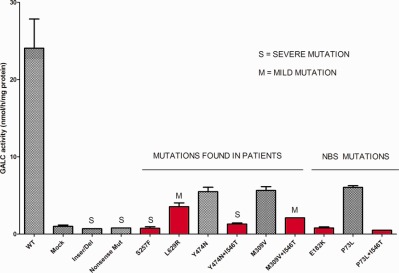
Expression studies of mutations and haplotypes found in the GALC gene of known patients with KD show a good correlation between severity of the mutation and residual activity measured. With this method, mutations found in individuals identified in newborn screening can be tested to assess whether the mutation is disease causing. The graph shows expression studies of representative mutations.
Can psychosine and galactocerebrosidase activity predict early-infantile Krabbe's disease presymptomatically?
- Pages: 1084-1093
- First Published: 17 September 2016
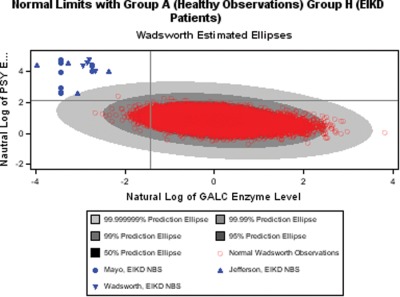
This study shows that it may be possible to use measures of psychosine and galactocerebrosidase enzyme activity from newborn screening dried blood spot samples to distinguish healthy infants (red circles) from those afflicted with early-infantile Krabbe's disease (solid blue triangles and solid blue circles) who may benefit from intervention.
Metabolic profiling reveals biochemical pathways and potential biomarkers associated with the pathogenesis of Krabbe disease
- Pages: 1094-1107
- First Published: 17 September 2016
Review
Diffusion tensor imaging: A biomarker of outcome in Krabbe's disease
- Pages: 1108-1115
- First Published: 17 September 2016
Therapies and Clinical Management
Reviews
Clinical management of Krabbe disease
- Pages: 1118-1125
- First Published: 17 September 2016
Treatment for Krabbe's disease: Finding the combination
- Pages: 1126-1137
- First Published: 17 September 2016
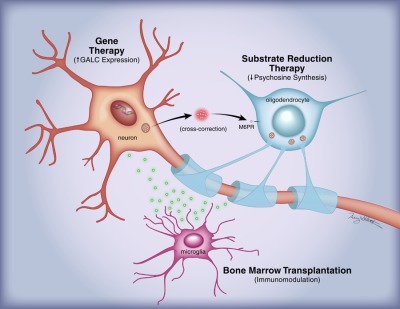
After AAV-mediated gene therapy, neurons express and secrete GALC, which is endocytosed by oligodendrocytes where it degrades psychosine. The SRT drug, L-cycloserine, decreases the synthesis of psychosine. BMT decreases the neuroinflammatory response, and supplies low levels of GALC as donor-derived microglia reconstitute the CNS.
Research Articles
Intrathecal administration of AAV/GALC vectors in 10–11-day-old twitcher mice improves survival and is enhanced by bone marrow transplant
- Pages: 1138-1151
- First Published: 17 September 2016
Hematopoietic Stem cell transplantation and lentiviral vector-based gene therapy for Krabbe's disease: Present convictions and future prospects
- Pages: 1152-1168
- First Published: 17 September 2016
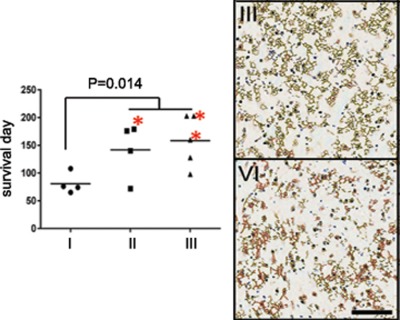
An L-cycloserine-mediated increase in insulin-like growth factor 2 receptor expression in mouse CNS and an aggressive chemotherapy-based conditioning regimen enhance the efficacy of bone marrow transplantation and gene therapy protocols for treating GALC deficiency in the Twitcher mouse model of Krabbe's disease.
Reviews
Gene therapy for metachromatic leukodystrophy
- Pages: 1169-1179
- First Published: 17 September 2016
Cellular transplant therapies for globoid cell leukodystrophy: Preclinical and clinical observations
- Pages: 1180-1188
- First Published: 17 September 2016
Research Article
Evidence for improved survival in postsymptomatic stem cell-transplanted patients with Krabbe's disease
- Pages: 1189-1194
- First Published: 17 September 2016
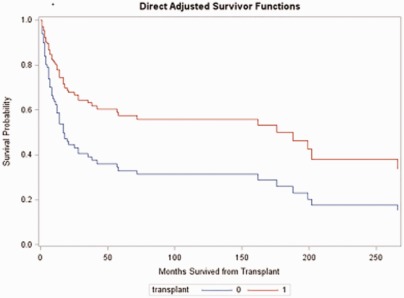
Krabbe's disease is a neurodegenerative disorder that can be treated only with transplantation of umbilical cord blood. Earlier studies have not shown statistically significant improvement of survival of patients treated after the patients had developed symptoms. By using Cox regression analysis, we establish a 2.2-fold improvement of survival in symptomatic patients.
Mini-Review
Myelin repair by transplantation of myelin-forming cells in globoid cell leukodystrophy
- Pages: 1195-1202
- First Published: 25 August 2016
Reviews
New therapeutic approaches for Krabbe disease: The potential of pharmacological chaperones
- Pages: 1203-1219
- First Published: 17 September 2016
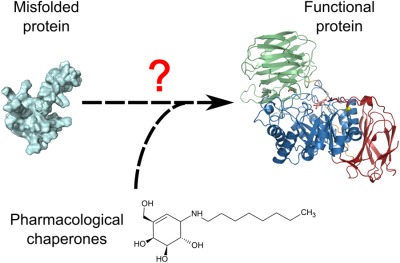
Missense mutations that cause protein misfolding underlie several forms of Krabbe disease. This Review discusses recent studies that have identified a number of small molecules with the potential to act as pharmacological chaperones to correct these folding defects and that may be developed as new therapeutics.
Chaperones as potential therapeutics for Krabbe disease
- Pages: 1220-1230
- First Published: 17 September 2016
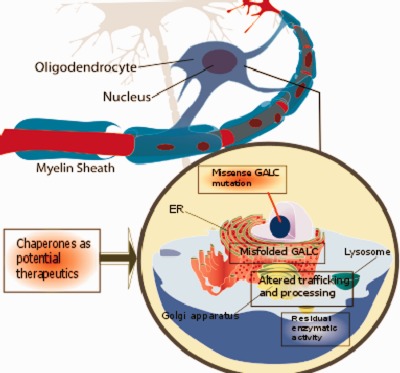
Krabbe's disease (KD) is a demyelinating lysosomal storage disease. Nearly 70% of disease-associated missense mutations can generate instability and misfolding of GALC protein. The consequence is a lower and residual enzymatic activity. In this resides the principle that chaperones are promising therapeutics for KD.
Research Articles
Cell-based high-throughput screening identifies galactocerebrosidase enhancers as potential small-molecule therapies for Krabbe's disease
- Pages: 1231-1245
- First Published: 17 September 2016
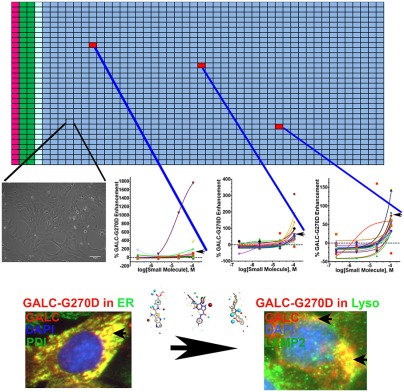
Through a quantitative cell-based HTS against over 46,000 compounds, three small molecules were identified and shown to enhance mutant galactocerobrosidase (GALC) in globoid-cell leukodystrophy (GLD) patients cells. Further studies showed that the small molecules stabilize and increased mutant GALC levels in the lysosomes, being potential therapeutic agents for GLD.
Lithium improves cell viability in psychosine-treated MO3.13 human oligodendrocyte cell line via autophagy activation
- Pages: 1246-1260
- First Published: 17 September 2016
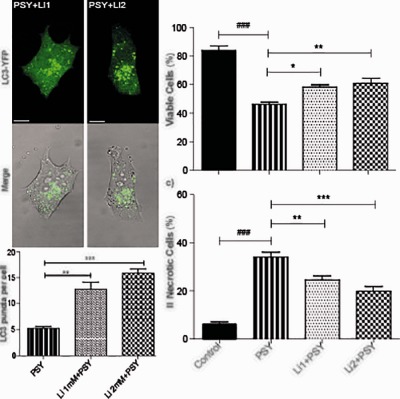
The authors report on autophagy in the human oligodendrocyte cell line MO3.13 treated with PSY and exploitation of Li as an autophagy modulator to rescue cell viability and demonstrate that PSY causes upregulation of the autophagic flux at the level of autophagosome and autolysosome formation and LC3-II expression.
Review
Substrate reduction therapy for Krabbe's disease
- Pages: 1261-1272
- First Published: 17 September 2016

Substrate reduction therapy could be applied to the terminal step in galactosylceramide and psychosine synthesis or to earlier biosynthetic steps. Reduction of galactosylceramide and psychosine production would slow the disease course by lowering the accumulation of substrates not adequately digested, although the degree and the timing of reduction remain to be determined.
Research Article
Suppression of galactocerebrosidase premature termination codon and rescue of galactocerebrosidase activity in twitcher cells
- Pages: 1273-1283
- First Published: 17 September 2016
Reviews
Krabbe's leukodystrophy: Approaches and models in vitro
- Pages: 1284-1292
- First Published: 17 September 2016
Quantum dots and potential therapy for Krabbe's disease
- Pages: 1293-1303
- First Published: 17 September 2016
Perspective on innovative therapies for globoid cell leukodystrophy
- Pages: 1304-1317
- First Published: 17 September 2016
Research Article
Zoledronate derivatives as potential inhibitors of uridine diphosphate-galactose ceramide galactosyltransferase 8: A combined molecular docking and dynamic study
- Pages: 1318-1326
- First Published: 17 September 2016
New Areas of Research
Commentaries
Beyond Krabbe's disease: The potential contribution of galactosylceramidase deficiency to neuronal vulnerability in late-onset synucleinopathies
- Pages: 1328-1332
- First Published: 17 September 2016
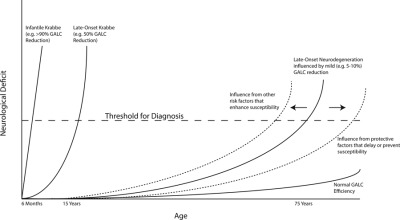
Here, a new condition is proposed in which mild SNPs to the GALC gene result in slight deficiencies of GALC's activity that may lead to accumulation of low quantities of toxic material. Over decades of slow and progressive metabolic deficiency, this may increase neuronal vulnerability, leading to late onset synucleinopathies.
Port-to-port delivery: Mobilization of toxic sphingolipids via extracellular vesicles
- Pages: 1333-1340
- First Published: 17 September 2016
Reviews
Neuroimmune mechanisms in Krabbe's disease
- Pages: 1341-1348
- First Published: 17 September 2016
Immunological considerations for treating globoid cell leukodystrophy
- Pages: 1349-1358
- First Published: 17 September 2016
Mini-Review
Endothelial cell dysfunction in globoid cell leukodystrophy
- Pages: 1359-1367
- First Published: 01 April 2016
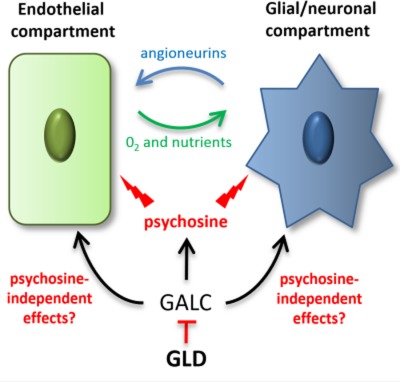
A tight trophic cross-talk exits between endothelial and glial/neuronal compartments in the CNS. β-Galactosylceramidase deficiency in globoid cell leukodystrophy causes accumulation of the toxic metabolite psychosine in the brain, leading to neurotoxic effects, angiosuppression, and endothelial cell damage. Psychosine-independent alterations may also contribute to neuronal and vascular defects in the brain and peripheral tissues, with endothelial dysfunction representing a possible novel pathogenic mechanism in human leukodystrophies.




